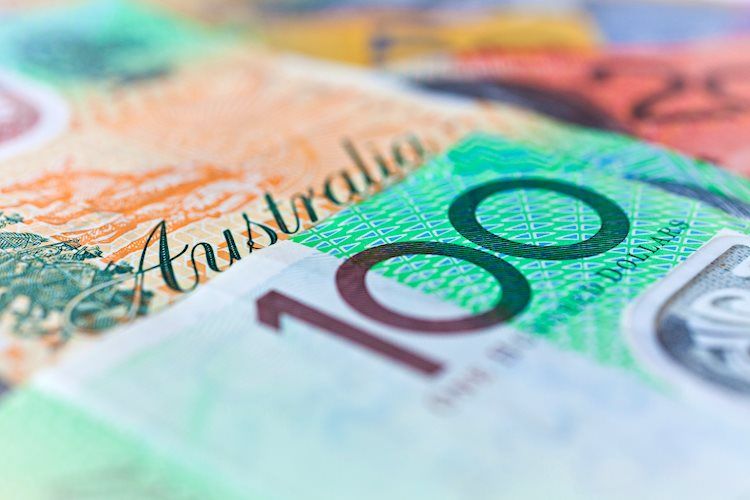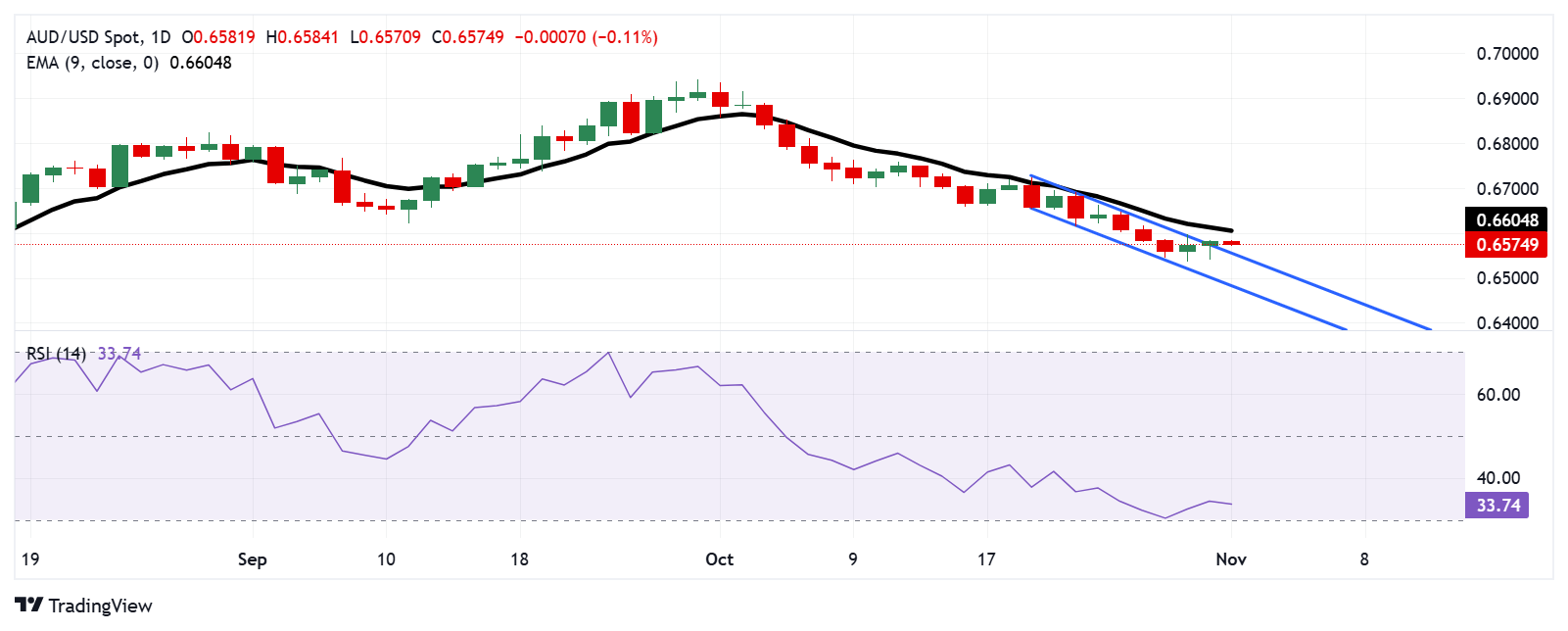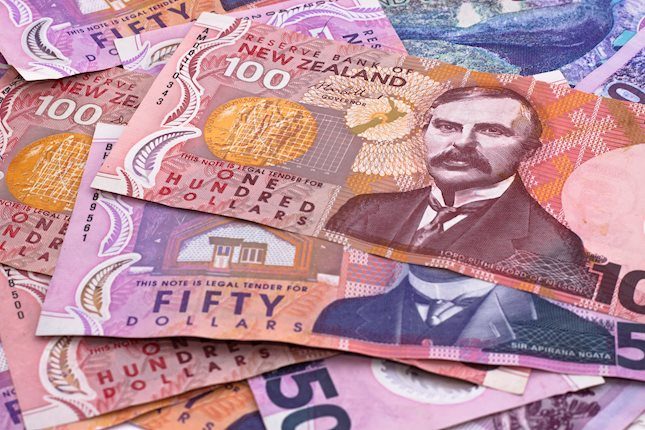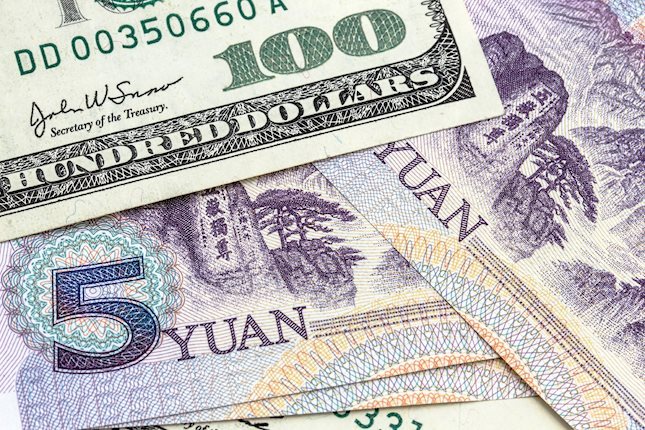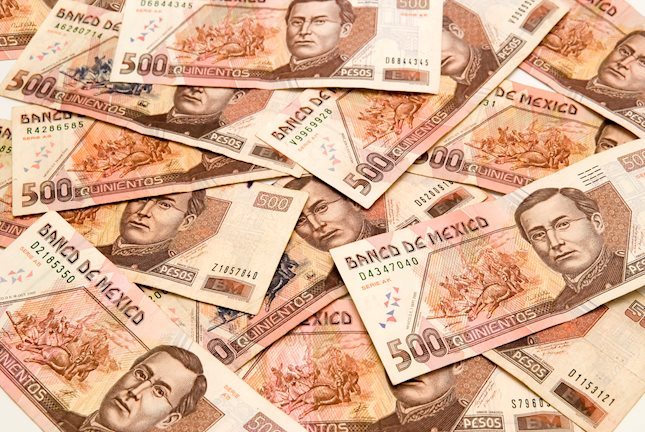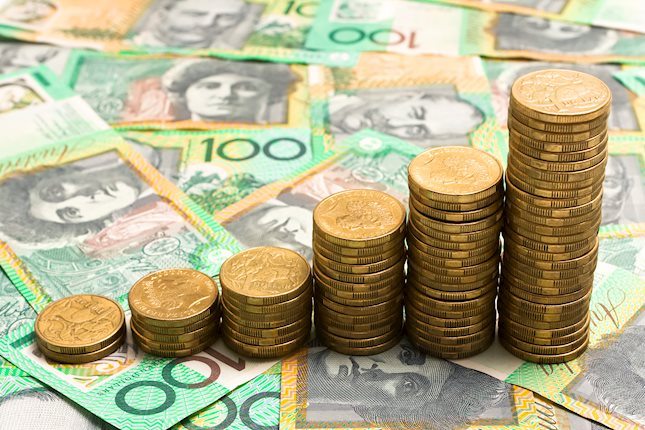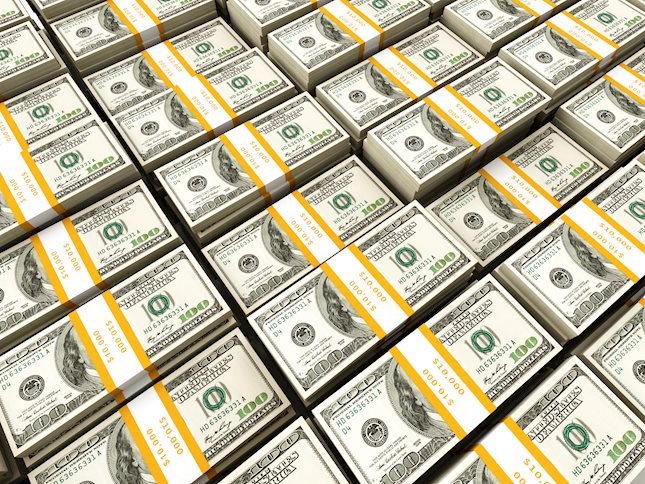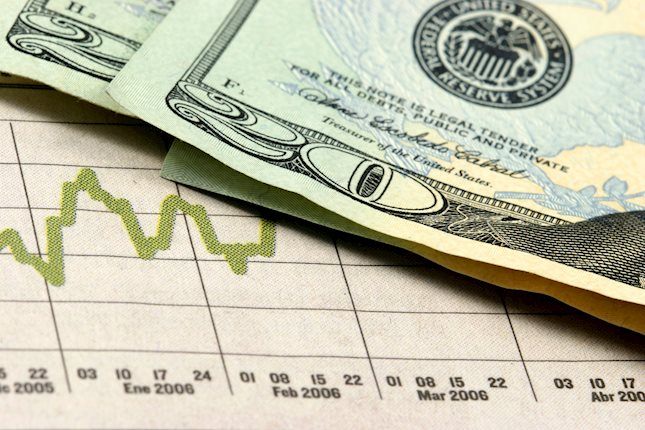Australian Dollar remains subdued as US Dollar appreciates ahead of Nonfarm Payrolls
- The Australian Dollar faces challenges following the mixed Producer Price Index data released on Friday.
- China’s Caixin Manufacturing PMI rose to 50.3 in October, up from September’s 49.3, surpassing the expected 49.7 reading.
- The US Dollar has struggled since the Personal Consumption Expenditures - Price Index data released on Thursday.
The Australian Dollar (AUD) remains tepid against the US Dollar (USD) following two days of gains, as Australia's mixed Producer Price Index (PPI) data for the third quarter was released on Friday. However, expectations of a hawkish stance from the Reserve Bank of Australia (RBA) continue to support the Aussie Dollar, limiting losses in the AUD/USD pair.
Australia's Producer Price Index rose by 0.9% quarter-on-quarter in Q3, following a 1.0% increase in the prior period and surpassing market forecasts of a 0.7% rise. This marks the 17th consecutive period of producer inflation. On an annual basis, the PPI growth slowed to 3.9% in Q3, down from the previous quarter’s 4.8% increase.
China’s Caixin Manufacturing Purchasing Managers Index (PMI) increased to 50.3 in October, up from 49.3 in September, surpassing market expectations of 49.7. As China is a key trade partner for Australia, shifts in the Chinese economy could significantly influence Australian markets.
The US Dollar (USD) faced challenges after the release of Personal Consumption Expenditures (PCE) - Price Index data on Thursday. However, the downside of the USD would be restrained due to prevailing market caution amid uncertainty ahead of the upcoming US presidential election.
Traders are awaiting the Nonfarm Payrolls (NFP) report set for release on Friday. The US economy is projected to have added 113,000 jobs in October, with the Unemployment Rate expected to remain unchanged at 4.1%.
Daily Digest Market Movers: Australian Dollar faces challenges after PPI, China PMI
- The US Personal Consumption Expenditures (PCE) Price Index indicated that core inflation rose by 2.7% year-over-year in September. Additionally, Initial Jobless Claims fell to a five-month low of 216,000 for the week ending October 25, signaling a resilient labor market and reducing expectations for imminent rate cuts by the Federal Reserve (Fed).
- The seasonally adjusted Australian Retail Sales rose by 0.1% month-over-month in September, falling short of the expected 0.3% and significantly down from the 0.7% growth seen in the previous month. On a quarterly basis, Retail Sales increased by 0.5% in Q3, rebounding from a 0.3% decline in the prior quarter.
- China's NBS Non-Manufacturing PMI rose to 50.2 in October, up from 50.0 in the previous month but slightly below market expectations of 50.4. Meanwhile, the NBS Manufacturing PMI edged up to 50.1 from the prior reading of 49.8, modestly surpassing the forecast of 50.0.
- US Gross Domestic Product (GDP) annualized expanded by 2.8% in Q3, below 3.0% in Q2 and forecasts of 3.0%. The ADP Employment Change report showed that 233,000 new workers were added in October, marking the largest increase since July 2023. This followed an upward revision to 159,000 in September and significantly exceeded forecasts of 115,000.
- The Australian Bureau of Statistics reported that the Consumer Price Index (CPI) rose just 0.2% quarter-over-quarter in the third quarter, down from 1.0% in the previous quarter and slightly below the anticipated 0.3%. The monthly CPI rose by 2.1% year-over-year in September, coming in below market expectations of 2.3% and down from August's reading of 2.7%.
- On Tuesday, the US Bureau of Labor Statistics (BLS) reported that JOLTS Job Openings reached 7.443 million in September, down from 7.861 million in August and falling short of the market expectation of 7.99 million.
- The Reserve Bank of Australia signaled that the current cash rate of 4.35% is sufficiently restrictive to guide inflation back to the target range of 2%-3% while continuing to support employment. As a result, a rate cut in November appears unlikely.
- ANZ-Roy Morgan Australia Consumer Confidence dropped to 86.4 this week, down from 87.5 the previous week.
Technical Analysis: Australian Dollar must reintegrate into descending channel to firm up bearish bias
AUD/USD trades near 0.6570 on Friday. The daily chart indicates a potential softening of the bearish bias, as the pair has broken above its descending channel pattern. The 14-day Relative Strength Index (RSI) aligns with lower highs and lows, suggesting that bearish sentiment persists.
On the support side, AUD/USD may test the upper boundary at 0.6550, potentially re-entering the descending channel. A successful return would reinforce the bearish bias, pushing the pair toward the key psychological level of 0.6500, followed by the channel's lower boundary near 0.6480.
Regarding resistance, AUD/USD could challenge the nine-day Exponential Moving Average (EMA) at 0.6604. A break above this level may bolster the pair, potentially paving the way to the psychological level of 0.6700.
AUD/USD: Daily Chart
Australian Dollar PRICE Today
The table below shows the percentage change of Australian Dollar (AUD) against listed major currencies today. Australian Dollar was the weakest against the New Zealand Dollar.
| USD | EUR | GBP | JPY | CAD | AUD | NZD | CHF | |
|---|---|---|---|---|---|---|---|---|
| USD | 0.07% | 0.02% | 0.31% | -0.04% | 0.09% | -0.11% | 0.08% | |
| EUR | -0.07% | -0.05% | 0.25% | -0.11% | 0.03% | -0.15% | 0.00% | |
| GBP | -0.02% | 0.05% | 0.29% | -0.06% | 0.07% | -0.11% | 0.02% | |
| JPY | -0.31% | -0.25% | -0.29% | -0.35% | -0.23% | -0.42% | -0.25% | |
| CAD | 0.04% | 0.11% | 0.06% | 0.35% | 0.12% | -0.05% | 0.08% | |
| AUD | -0.09% | -0.03% | -0.07% | 0.23% | -0.12% | -0.18% | -0.05% | |
| NZD | 0.11% | 0.15% | 0.11% | 0.42% | 0.05% | 0.18% | 0.13% | |
| CHF | -0.08% | -0.01% | -0.02% | 0.25% | -0.08% | 0.05% | -0.13% |
The heat map shows percentage changes of major currencies against each other. The base currency is picked from the left column, while the quote currency is picked from the top row. For example, if you pick the Australian Dollar from the left column and move along the horizontal line to the US Dollar, the percentage change displayed in the box will represent AUD (base)/USD (quote).
Forex News
Keep up with the financial markets, know what's happening and what is affecting the markets with our latest market updates. Analyze market movers, trends and build your trading strategies accordingly.
